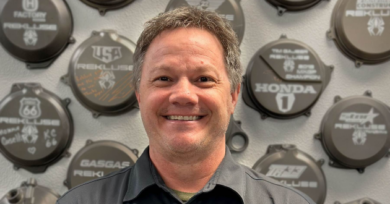Management styles that hurt your business
 One of the best things about owning a dealership is that you are the one steering the ship and are directly responsible for the direction, growth and profit. One of the most challenging things about owning a dealership is that you are responsible for steering the ship and are directly responsible for direction, growth and profit. There are many highs and lows throughout the life of a business, and regardless of what happens whether it be good, bad or otherwise, the buck stops with you.
One of the best things about owning a dealership is that you are the one steering the ship and are directly responsible for the direction, growth and profit. One of the most challenging things about owning a dealership is that you are responsible for steering the ship and are directly responsible for direction, growth and profit. There are many highs and lows throughout the life of a business, and regardless of what happens whether it be good, bad or otherwise, the buck stops with you.
There is no shortage of advice from consultants, 20-groups and self-help gurus about what you should be doing and how you should be doing it, and yes, I’m lumped in there somewhere as well. But this month, I want to write about what you shouldn’t be doing, and in particular, management styles that can cripple a dealership and prevent it from growing and being profitable. I’m going to focus specifically on two management styles that are at opposite ends of the spectrum yet are equally destructive and prohibitive to growth.
The first actually isn’t a management style, and that’s the problem in itself. It’s called absentee ownership. This is usually an owner who owns more than one or has several business interests that do not allow him or her to focus on any one particular business other than the one that holds the most interest or challenge for him or her.
Several years ago, when I worked in floorplan finance, I learned to be more cautious and subjective with dealerships that did not have an owner actively involved with the dealership on a day-to-day basis. I’m not saying it can’t be done, but I am saying that several dealerships I dealt with that had absentee owners did not do well. In fact, when I eventually got into management with credit authority, I steered away from those types of dealerships. As an OEM district manager, I also stayed away from dealerships with an absentee owner. Once, against my better judgement, I set up a dealer who owned several businesses but promised to be involved with this particular business on a daily basis. He didn’t, and I think they lasted 3, maybe 4, years.
While I admire strong entrepreneurial drive and spirit, juggling various business interests before those businesses are self sustaining with solid standard operating procedures and processes can be a recipe for disaster. I’ve witnessed this more than a few times over my career. It’s great to have an idea and raise the capital to put the idea into practice, but to leave it up to someone else to maintain and grow that idea is more often than not a huge mistake. Let me explain why.
You can hire an experienced general manager who knows what needs to be done and will care about the success and future of the business, but in the end, they are an employee and therefore, do not share the same mindset the owner does. An employee hasn’t signed a personal guarantee or pledged liquid securities and investments like you have. They don’t have any skin in the game like you do, and as a result, they don’t share the concern, stress and anxiety that you do. If the business doesn’t survive, an employee walks away and looks for another job. An owner has to deal with the financial fallout of the failure.
Don’t get me wrong, there are managers who treat the business they work for, along with it’s financial viability, as if it was their own. Some, including myself, have done the 10-hour days, 6-days-a-week routine, but that’s the exception, not the rule. This is not being critical. It’s being realistic. Your managers can do their best and work hard for their employer, but honestly, most of us will take care of No. 1, which is ourselves.
In order to establish and maintain operational and financial stability, an owner has to be involved with their investment on a regular, consistent basis. Daily is best. Every business has a certain tone, attitude and culture that is based on the various staff’s and management’s direction. As an owner, you have no idea what that tone and culture is if you aren’t there on a regular basis to experience it. You might think you know but you can’t get a feel for what’s going on if you aren’t there. Don’t take anyone’s word for it. You need to inspect what you expect.
As an owner, you get all the glory and spoils of success. You also get to be the one who has to face your creditors and pay for failure. Please don’t let your lack of involvement be the reason for poor performance or failure. The reason for your business success or failure is staring at you in the mirror.
My next blog article will focus on a management style that is completely opposite but just as damaging, perhaps worse.
Bruce Marcia is the director of Bruce Marcia and Associates, a retail management consulting firm that specializes in assisting and supporting dealerships in the RV/marine and powersports industries. As a recognized troubleshooter with over 30 years of experience in inventory finance, dealership general management and as a district manager for a major OEM, Bruce has had the unique opportunity to understand and learn from all three important fields that make these industries function.
Contact: bruce@bm-associates.com
Website: http://www.bm-associates.com
Phone: 587/577-6264









Good article Bruce. Like you, I’ve experienced the negative side of the absentee owner both as a DSM and a consultant. It’s even more interesting now with the large number of multi-store conglomerates in the industry. They have yet another dynamic that is largely dependent on corporate “Directors.” They are all over the board when it comes to effective management.
Keep up the good work. Looking forward to part 2. I suspect you will hit on one of the most common management issues we have with the “typical” dealership.
Thanks for the kind words, Steve. I agree with your comments regarding the multi-store conglomerates. Those directors you speak about never get a real feel for what’s going on and that puts them in a position of being reactive instead of proactive.
Thanks for the feedback and I hope you do enjoy part 2 as well.
All the best.